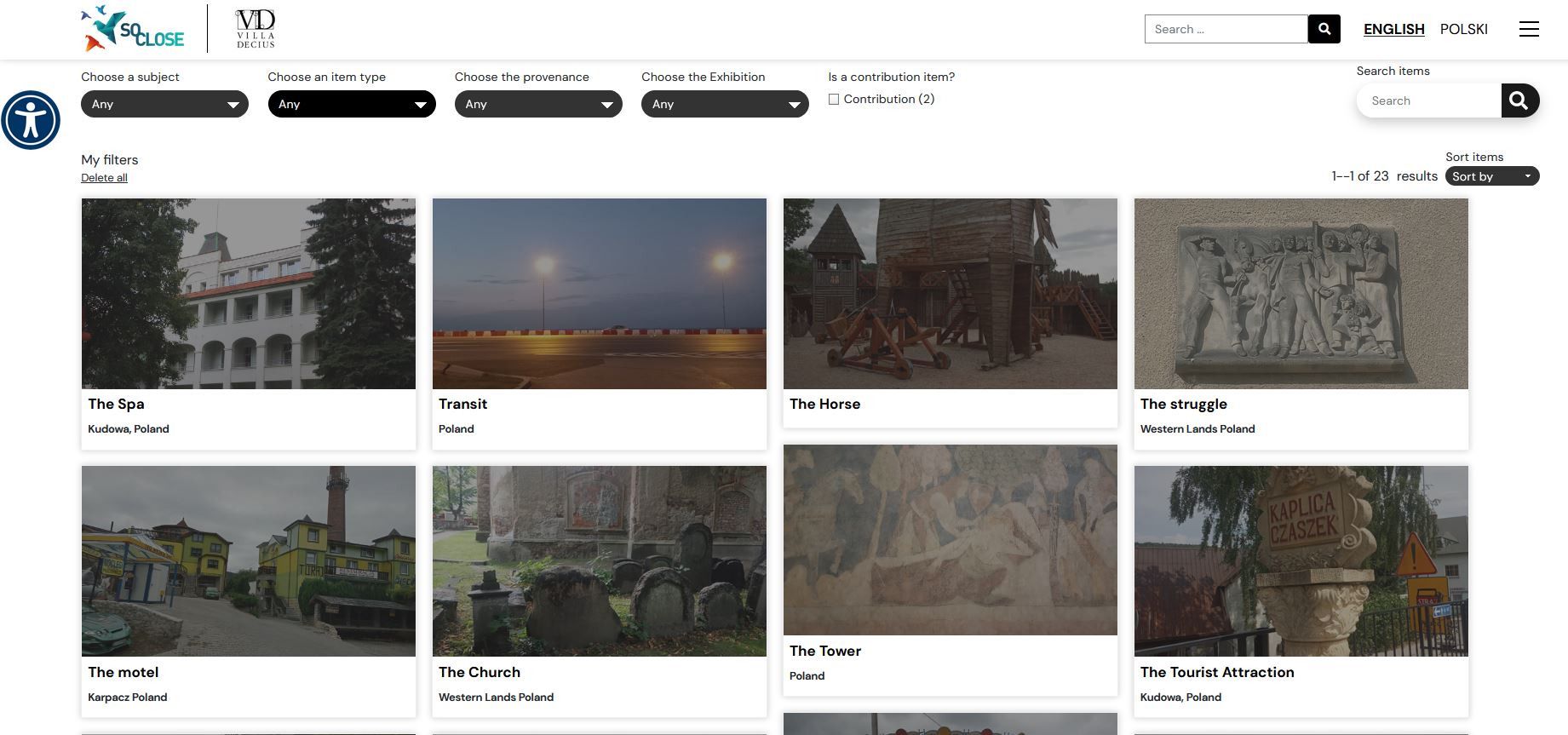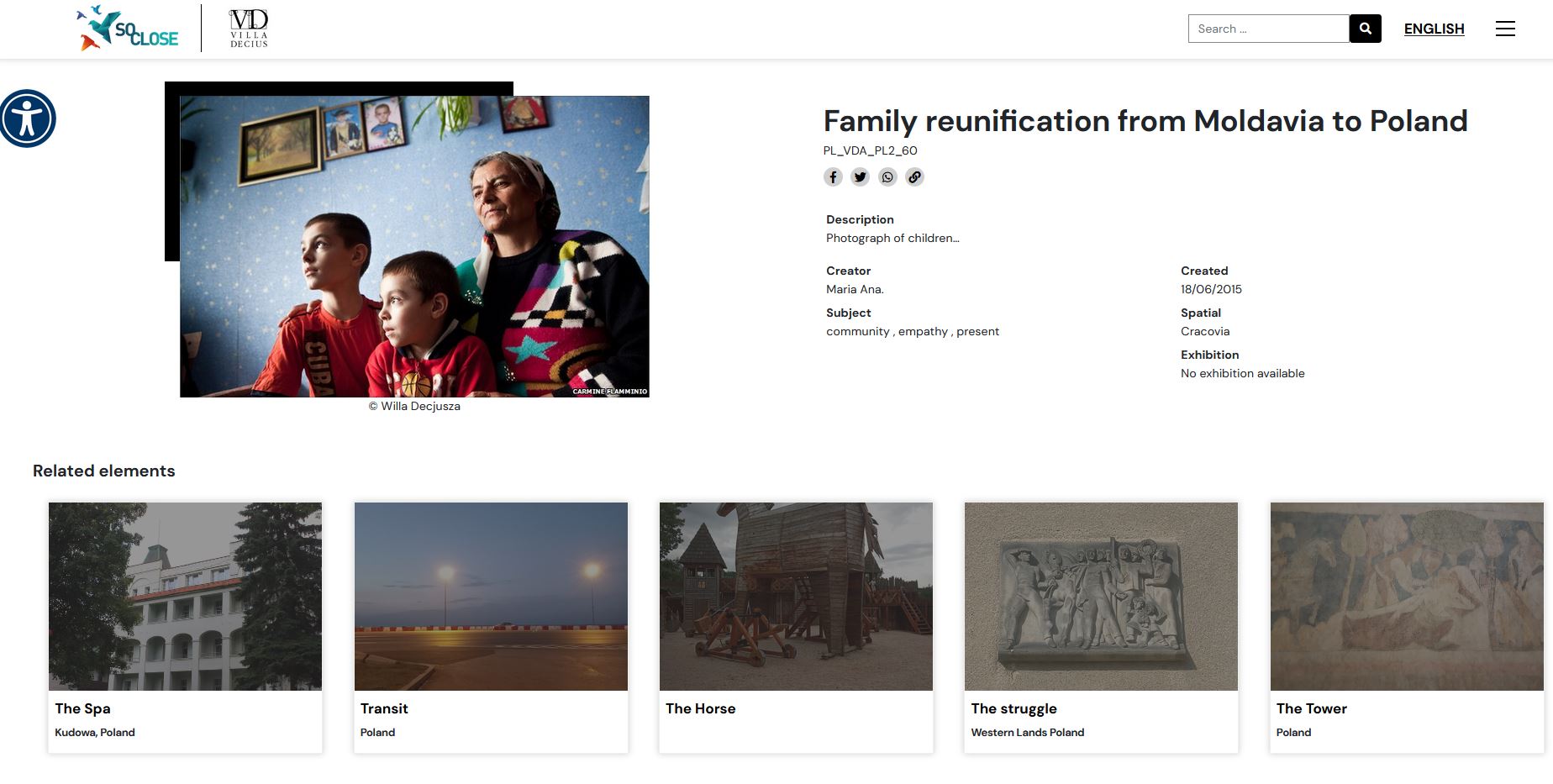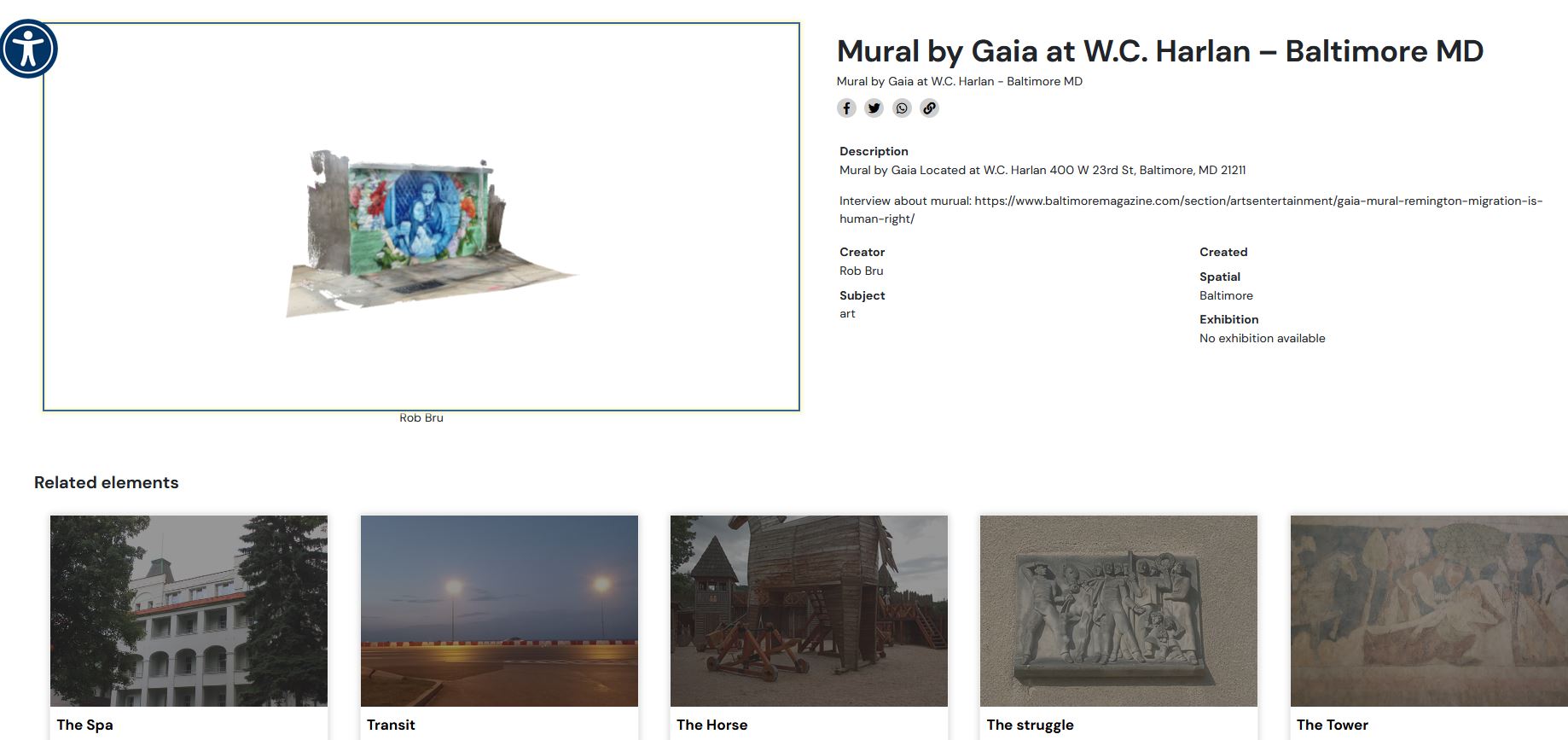Two days ago, we shared an article by Kasia Ioffe on the VDA story map. Today we have some insights from Dr Łucja Piekarska – Duraj on the second tool chosen by Willa Decius Association – the participatory virtual exhibition.
article by Dr Łucja Piekarska – Duraj

Villa Decius is a cultural institution operating in a renaissance villa in Krakow. We joined SO-CLOSE mainly for the interest in developing a multicultural, inclusive community where heritage can act an important part of social integration. As the project coincided with the war in Ukraine and provided it with new needs/motivations.
About the virtual exhibition
The virtual exhibition allows to gather and present a collection of digitised objects. It is simple and user-friendly both for curators and end-users, so it effectively allows to attract both content providers and audiences. The virtual exhibition is a way of gathering various data which may be commented on in a short or in a long way, but most of all it permits to connect various objects and images in such a way creating a real interpretive network of individual and collective stories.
In VD we can use it to create hybrid exhibitions which can include very different types of objects. These collections gain audiences who can also contribute to the collections and the value of feedback is very high for us.
I love the overall simplicity of the virtual exhibition, but I do appreciate the feedback tool, as it encourages the feedback of anyone interested (even for a minute).


Content gathering
A historian with experience in archive-based research was employed to gather the stories. It turned out, however, that the narrative created by her was not very interesting as it only dealt with some facts and provided some references to own experiences of the refugees. The results had to be enriched by the photos, so we searched in family archives as well as in museums we had contacted. The challenge was to transform very informative results of the archive based research into more reader friendly, human based stories. We searched also in very close proximity of family members.
I collected photos of my own, but before I asked all friends, relatives and anyone who could have any input to the topic. I also used snowball tool asking people to recommend others who might be willing to contribute.
I used my own photos prepared for the topic we decided to share with the audiences. Originally, I prepared a collection of some photos related to post war refugees, but we decided to keep them for later, as they were too sensitive for the current war situation.
Opportunities for stakeholders
The virtual exhibition creates opportunities for the creation of various collections which may be very easily combined/curated/exhibited. It is perfect for small privately owned collections, but it also presents tremendous potential in terms of connecting the content with artists who can interpret it in many ways (for example, by composing music based on stories).
We gain new audiences, but most of all can easily enrich the community of contributors to the exhibitions. The tool can be easily connected with other VD activities and as such make us gain greater visibility as an institution, but most of all will add up to the processes of building more inclusive society.

Participatory virtual exhibition



